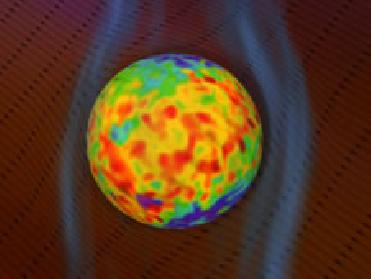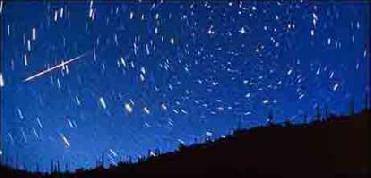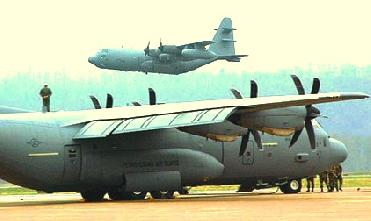
This image shows an artist's conception of the bubble around our solar system moving through the interstellar medium. New observations from the Cassini spacecraft orbiting Saturn suggest the shape resembles something like a slippery ball moving through smoke. Image credit: NASA/JPL
WASHINGTON (BNS): Scientists studying heliosphere � the region of sun�s activities � have presented a new view about its shape and the forces that influence it.
Images obtained from the Ion and Neutral camera onboard NASA's Cassini spacecraft suggest that the heliosphere may not have the comet-like shape, as predicted by existing models.
�These images have revolutionised what we thought we knew for the past 50 years; the sun travels through the galaxy not like a comet but more like a big, round bubble.
�It's amazing how a single new observation can change an entire concept that most scientists had taken as true for nearly fifty years,� said Stamatios Krimigis at the Applied Physics Laboratory, who is the principal investigator for Cassini's Magnetospheric Imaging Instrument which carries the Ion and Neutral camera.
The scientists have published their paper in the latest issue of Science Express.
As solar wind flows from the sun, it carves out a bubble in the interstellar medium. Models of the boundary region between the heliosphere and interstellar medium have been based on the assumption that the relative flow of the interstellar medium and its collision with the solar wind dominate the interaction. This would create a foreshortened �nose� in the direction of the solar system's motion, and an elongated �tail� in the opposite direction.
However, images obtained from Cassini suggest that the solar wind's interaction with the interstellar medium is instead more significantly controlled by particle pressure and magnetic field energy density.
�The map we've created from the images suggests that pressure from a hot population of charged particles and interaction with the interstellar medium's magnetic field strongly influence the shape of the heliosphere,� said Don Mitchell, another researcher associated with the study.
Since entering into orbit around Saturn in July 2004, the Ion and Neutral camera has been mapping energetic neutral atoms near the planet, as well as their dispersal across the entire sky, NASA said.
The energetic neutral atoms are produced by energetic protons, which are responsible for outward pressure of the heliosphere beyond the interface where the solar wind collides with the interstellar medium, and which interact with the magnetic field of the interstellar medium.
�Energetic neutral atom imaging has demonstrated its power to reveal the distribution of energetic ions, first in Earth's own magnetosphere, next in the giant magnetosphere of Saturn and now throughout vast structures in space-out to the very edge of our sun's interaction with the interstellar medium,� said Edmond C. Roelof, Magnetospheric Imaging Instrument co-investigator.
The results from Cassini complement and extend findings from NASA's Interstellar Boundary Explorer (IBEX) spacecraft. Data from IBEX and Cassini have made it possible for scientists to construct the first comprehensive sky map of our solar system and its location in the Milky Way galaxy.
 Previous Article
Previous Article Next Article
Next Article













The Indian Air Force, in its flight trials evaluation report submitted before the Defence Ministry l..
view articleAn insight into the Medium Multi-Role Combat Aircraft competition...
view articleSky enthusiasts can now spot the International Space Station (ISS) commanded by Indian-American astr..
view article